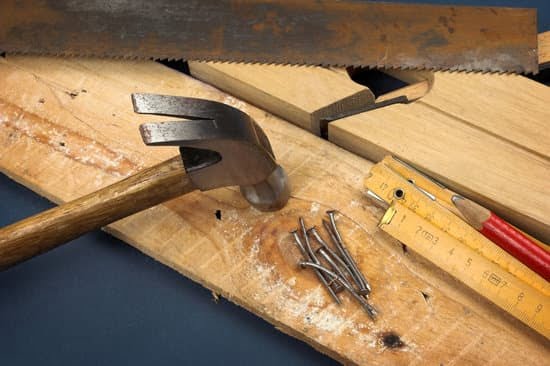Are you looking to embark on a woodworking project but not sure where to start? In this article, we will delve into the essential steps of creating a comprehensive woodwork design brief.
A design brief serves as the foundation for any woodworking project, outlining the key requirements, parameters, and expectations. From understanding project requirements to finalizing the design brief, we will guide you through each step of the process, equipping you with the knowledge and tools needed to effectively communicate your vision.
Woodwork design briefs are crucial in ensuring that woodworking projects are executed successfully and meet the desired outcomes. The initial section of this article provides an overview of what a woodwork design brief entails, emphasizing its importance in guiding the project from conception to completion.
Understanding the project requirements is a fundamental aspect of crafting a woodwork design brief. We will discuss gathering information, clarifying expectations, and defining key parameters that will shape your woodworking project. Additionally, we will explore how research plays a vital role in generating creative ideas for your design brief, equipping you with tools to brainstorm and develop innovative concepts for your project.
Understanding the Project Requirements
When embarking on a woodwork project, it is crucial to have a clear understanding of the project requirements before diving into the design phase. This initial step sets the foundation for a successful outcome and ensures that the end result meets the client’s expectations. Here’s how to go about defining and understanding the project requirements:
1. Define the Scope: Start by clearly defining the scope of the project. What are the specific woodworking tasks that need to be completed? Are there any specific dimensions or measurements that need to be adhered to? Understanding these details is essential in ensuring that the final design aligns with the project goals.
2. Gather Information: This involves conducting thorough research and gathering all relevant information related to the project. This may include client preferences, budget constraints, and any structural or functional requirements. By gathering comprehensive information, you can ensure that no important details are overlooked during the design process.
3. Clarify Expectations: It is equally important to have open communication with the client or stakeholders to clarify their expectations for the woodwork project. This may involve holding meetings or consultations to discuss their vision, style preferences, and any specific features they want to incorporate into the design.
By taking these steps in understanding the project requirements, you lay a solid groundwork for creating a woodwork design brief that effectively captures all essential elements of the project.
Researching and Generating Ideas
When it comes to creating a woodwork design brief, the initial step involves researching and generating ideas for the project. This phase is critical in developing a clear understanding of the client’s requirements and preferences while brainstorming creative concepts for the woodworking project.
Research plays a crucial role in understanding the client’s needs, as well as gaining insights into current design trends and innovative techniques. It helps in identifying potential challenges and opportunities that may impact the project, guiding the decision-making process in the design brief development.
The process of generating ideas involves brainstorming sessions where various concepts are explored and evaluated. This is an opportunity to think outside the box and come up with unique design solutions that align with the project requirements. Additionally, seeking inspiration from diverse sources such as nature, architecture, or art can enrich the creative process and lead to innovative design ideas.
Furthermore, substantial research should be dedicated to understanding different types of wood, their properties, grains, texture, and durability. This knowledge will inform material selection choices later on in the woodwork project.
In this phase it is also important to consider any specific requests or limitations from clients – they may have preferences regarding environmentally-friendly materials or certain types of wood for ethical reasons. Taking these factors into account at this stage will ensure that your final design will meet all expectations while adhering to regulations or restrictions set by your clients.
Setting Design Parameters
When it comes to woodwork projects, setting design parameters is essential for ensuring that the final outcome meets the client’s needs and preferences. This stage of the design brief process involves defining the specific constraints and requirements that will guide the project’s development.
Process of Establishing Design Parameters
The first step in setting design parameters is to thoroughly understand the client’s vision for the project. This may involve conducting meetings or interviews to gather detailed information about their expectations, aesthetic preferences, and functional requirements. Once this initial information has been gathered, it is important to translate these insights into clear and actionable design parameters.
Aligning With Client’s Needs
It is crucial to align the design brief with the client’s needs and preferences. This may involve incorporating specific materials, dimensions, or finishing details that are in line with the client’s vision. Additionally, understanding any budgetary or timeline constraints is essential for setting realistic design parameters that can be feasibly executed.
By carefully establishing design parameters at this stage of the woodwork design brief process, designers and woodworkers can ensure that their work will meet or exceed client expectations while also adhering to practical considerations such as budget and timeframe constraints.
Developing a Concept Sketch
When it comes to woodwork design briefs, creating a concept sketch is an essential step in visualizing the project and communicating ideas effectively. Whether you’re working on a furniture design or a custom woodworking project, having a clear concept sketch can serve as a roadmap for the entire process. Here are some important considerations for developing a concept sketch:
- Gather Inspiration: The first step in creating a concept sketch is to gather inspiration from various sources such as nature, architecture, art, and even everyday objects. Look for elements that resonate with the project requirements and will add uniqueness to your design.
- Define Proportions and Dimensions: Once you have a clear vision of the design direction, it’s important to define the proportions and dimensions of the final product. Consider the functionality of the piece and ensure that the concept sketch accurately represents its intended use.
- Experiment with Details: Use the concept sketch as an opportunity to experiment with different details and decorative elements. This is the stage where you can explore various joinery techniques, surface textures, and embellishments that will enhance the overall aesthetic of the woodwork.
By following these steps, you can effectively translate your ideas into a tangible visual representation through a well-developed concept sketch. Remember that this stage is all about capturing the essence of your design while allowing room for refinement as you progress through the woodwork project. Working closely with clients or stakeholders during this phase ensures that their feedback is integrated into the final concept sketch.
Materials Selection and Planning
When it comes to creating a woodwork design brief, one of the critical aspects to consider is materials selection and planning. The choice of materials can significantly impact the outcome of the project, so it’s essential to approach this stage with careful consideration. The first step in this process is to evaluate the requirements of the project and determine which materials best suit the design brief.
Researching and understanding the properties of different types of wood and other materials is crucial at this stage. Consider factors such as durability, aesthetics, availability, and cost when selecting materials for your woodwork project. Additionally, it’s important to assess whether the chosen materials align with any specific environmental or sustainability goals for the project.
Once you have identified suitable materials for your woodwork project, it’s time to plan for their acquisition and use. This involves estimating the quantities of each material needed for the target=”_blank” rel=”follow noopener”>project and considering factors such as waste, cutting efficiency, and potential reusability. Developing a detailed plan for material sourcing and management will help ensure that the project stays on track and within budget.
Ultimately, effective materials selection and planning are crucial components of a successful woodwork design brief. By carefully researching, evaluating, and planning for the use of materials in your project, you can set the stage for a well-executed and visually appealing final product. Paying attention to these details during the design brief phase will ultimately contribute to a smoother execution of your woodwork project from start to finish.
Creating a Detailed Design Brief
When it comes to woodworking projects, the design brief serves as a roadmap for the entire endeavor. A comprehensive and well-crafted design brief not only outlines the project’s requirements and parameters but also helps in aligning the final outcome with the client’s needs and preferences. In this section, we will delve into how to craft a detailed woodwork design brief effectively.
To begin, it is crucial to gather all the necessary information about the project requirements. This involves conducting thorough research and engaging in discussions with clients or stakeholders. Understanding the scope of work, budget constraints, time frame, and any specific preferences is essential in defining the parameters of the design brief.
Once all relevant information has been collected, it is time to structure and compose the design brief. A step-by-step approach can be adopted to ensure that all essential elements are included. This may involve outlining the project objectives, specifying deliverables, detailing technical requirements, and providing a timeline for completion.
In addition to textual content, visual aids such as sketches or diagrams can be incorporated into the design brief to enhance clarity and provide a better understanding of the proposed concepts. Templates can also be useful in organizing the information systematically. Ultimately, creating a detailed design brief requires thoroughness, clear communication, and attention to detail.
| Key Elements of a Design Brief | Importance |
|---|---|
| Project Objectives | Clear definition of project goals |
| Deliverables | Specific items or outcomes expected from the project |
| Technical Requirements | Detailed specifications for materials, tools, and processes |
| Timeline | Schedule for completion of various stages of the project |
Finalizing the Woodwork Design Brief
In conclusion, creating a comprehensive woodwork design brief is essential for the successful execution of any woodworking project. By following the outlined steps and considering the various aspects of a design brief, woodworkers can ensure that their projects are well-planned and aligned with client expectations. Understanding the project requirements, conducting thorough research, and setting design parameters are crucial in formulating a clear and detailed design brief.
Moreover, the process of developing a concept sketch and selecting suitable materials further refines the design brief, providing a visual representation and addressing practical considerations. As highlighted in this article, structuring and composing a detailed design brief is necessary to effectively communicate the project scope, objectives, and specifications. Additionally, finalizing the design brief involves reviewing and revising to ensure that it accurately reflects the project’s requirements before presenting it to clients or stakeholders.
By following these guidelines on how to do a woodwork design brief, woodworkers can approach their projects with confidence and clarity. A well-crafted design brief serves as a roadmap for successful project implementation, guiding all stakeholders involved towards achieving the desired outcome. Ultimately, understanding the importance of a design brief in woodworking projects empowers woodworkers to deliver high-quality results that meet or exceed client expectations.
Frequently Asked Questions
What Is the Design Process in Wood Work?
The design process in woodwork involves several key steps, starting with defining the problem or need, then researching and brainstorming ideas. After that, a design is developed, refined, and tested before finally being produced and evaluated for its effectiveness.
What Is a Design Brief in Technology Grade 9?
In Technology Grade 9, a design brief serves as a roadmap for a project. It typically includes the problem to be solved, the target audience or user, any constraints or limitations, as well as the criteria for success. It provides guidance throughout the design process.
How Do You Write a Design Brief for Technology Grade 8?
To write a design brief for Technology Grade 8, start by clearly stating the problem that needs to be addressed. Then, specify who the end users are and any constraints or limitations that need to be considered. Finally, outline what success would look like for this particular project.

Hi everyone! I’m a woodworker and blogger, and this is my woodworking blog. In my blog, I share tips and tricks for woodworkers of all skill levels, as well as project ideas that you can try yourself.





